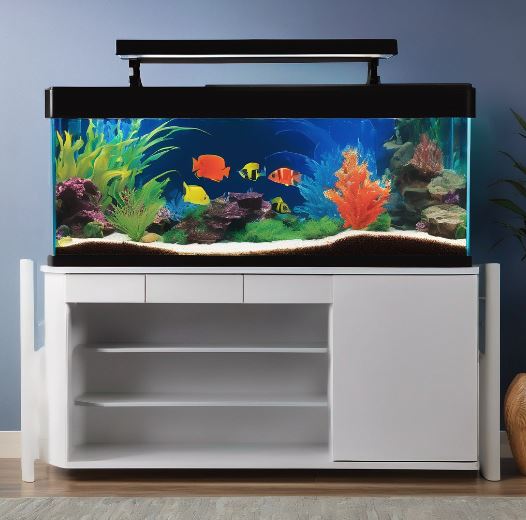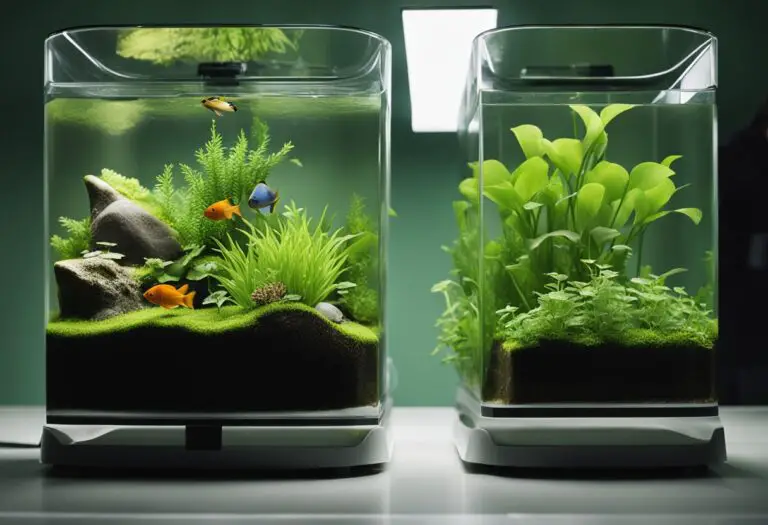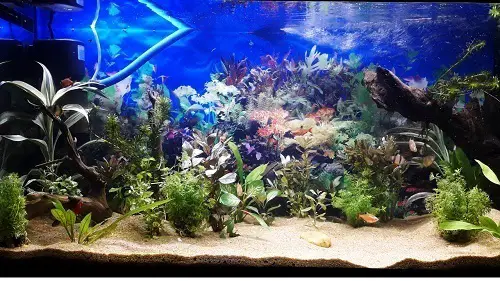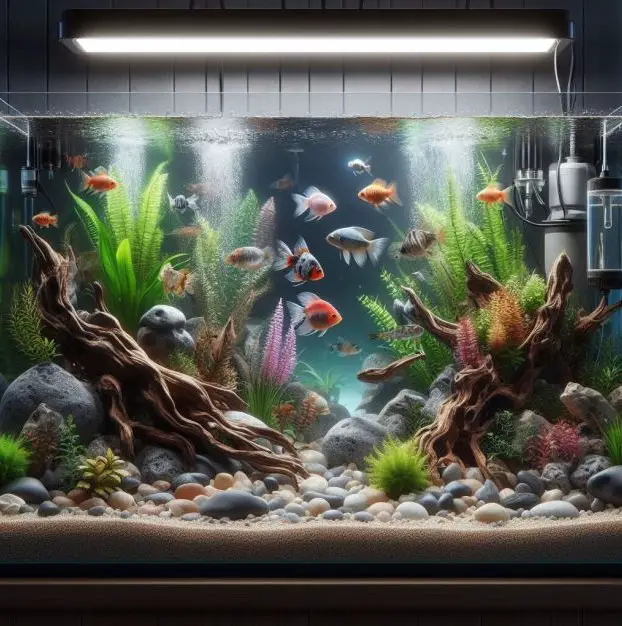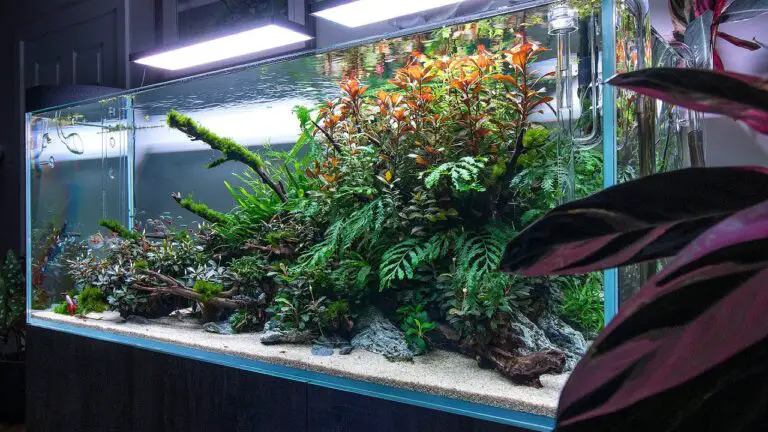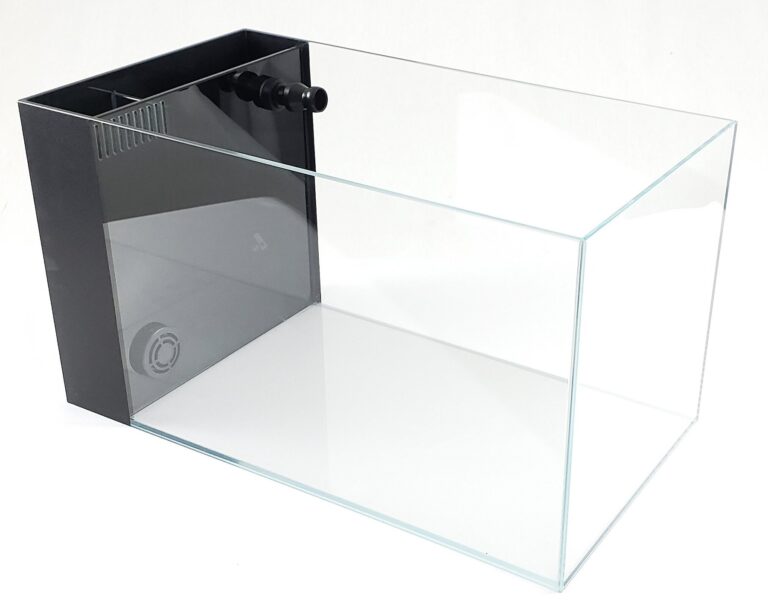The Ultimate Guide to Setting Up a 180 Gallon Aquarium
Are you a passionate aquarium enthusiast looking to upgrade your tank to a 180-gallon aquarium? Or maybe you’re a beginner looking to dive into the world of large-scale fishkeeping? Whatever the case may be, this comprehensive guide will walk you through everything you need to know about setting up and maintaining a 180-gallon aquarium. From choosing the right equipment to creating an optimal environment for your aquatic pets, we’ve got you covered. So let’s dive in!
180 Gallon Aquarium: An Overview
A 180-gallon aquarium is a large and impressive tank that provides ample space for a diverse range of fish species. With its generous size, this type of aquarium allows for the creation of a stunning underwater landscape filled with vibrant fish, plants, and decorations. Whether you’re interested in freshwater or saltwater setups, a 180-gallon aquarium offers endless possibilities for customization and creativity.

Choosing the Right Location
When setting up a 180-gallon aquarium, it’s crucial to select the right location in your home. Consider the following factors:
- Stability: Ensure that the floor can support the weight of the tank, water, and equipment. A solid, level surface is essential to prevent any structural issues.
- Accessibility: Choose a location that allows easy access for maintenance and viewing. Avoid placing the tank in areas with high foot traffic or direct sunlight, as these can cause stress to the fish and promote algae growth.
- Proximity to Utilities: Position the aquarium near electrical outlets and water sources for convenient setup and maintenance.
Essential Equipment
To create a successful and thriving 180-gallon aquarium, you’ll need to invest in high-quality equipment. Here are the essentials:
- Aquarium Tank: Opt for a durable and well-constructed 180-gallon tank made of glass or acrylic. Ensure that it is watertight and able to withstand the pressure of the water volume.
- Filtration System: Choose a filtration system that can handle the high bio-load of a large aquarium. A combination of mechanical, biological, and chemical filtration is recommended for optimal water quality.
- Heater: Maintain a stable water temperature with a reliable heater. Select a heater size appropriate for the volume of water in your tank.
- Lighting: Provide appropriate lighting to support the growth of live plants and enhance the visual appeal of your aquarium. LED lights are energy-efficient and offer customizable lighting options.
- Substrate: Select a suitable substrate based on your chosen aquatic environment. Gravel, sand, or specialized substrates can be used to create a natural and functional substrate for your tank.
- Decorations: Enhance the aesthetics of your aquarium with rocks, driftwood, and artificial or live plants. These elements provide hiding spots and create a more natural habitat for your fish.
- Water Test Kit: Regularly monitor the water parameters such as pH, ammonia, nitrite, and nitrate levels using a reliable water test kit. This will help you maintain a healthy environment for your fish.

The Nitrogen Cycle: A Crucial Process
Before introducing fish into your 180-gallon aquarium, it’s essential to understand the nitrogen cycle. This natural process is crucial for establishing a stable and healthy environment for your aquatic pets.
During the nitrogen cycle, beneficial bacteria convert toxic ammonia, produced by fish waste and decaying organic matter, into less harmful substances. This cycle consists of three stages:
- Ammonia: Fish waste and decaying matter release ammonia, which is highly toxic to fish.
- Nitrite: Nitrosomonas bacteria convert ammonia into nitrite, which is still toxic but less harmful than ammonia.
- Nitrate: Nitrobacter bacteria convert nitrite into nitrate, which is less toxic and can be removed through regular water changes and the growth of live plants.
To kickstart the nitrogen cycle, you can introduce beneficial bacteria into your tank using a commercial bacterial supplement. Regular testing of water parameters is crucial during the cycling process to ensure that toxic levels of ammonia and nitrite are kept in check.
Choosing the Right Fish
Now that your 180-gallon aquarium is fully set up and cycled, it’s time to select the right fish to populate your underwater world. Consider the following factors when choosing your fish:
- Compatibility: Research the compatibility of different fish species to ensure they can coexist peacefully in your aquarium. Some species may be territorial or aggressive, while others are more social and community-oriented.
- Size: Take into account the adult size of the fish species you’re interested in. Ensure that they have ample space to swim and grow comfortably in your 180-gallon tank.
- Water Parameters: Different fish species have specific water parameter requirements. Ensure that the water conditions in your tank match the needs of the fish you plan to keep.
- Diet: Research the dietary preferences of your chosen fish species and ensure that you can provide them with the appropriate food.
Freshwater Fish
- Guppy Fish: Guppies are colorful, lively and easy to care for. They come in many different patterns and colors, and they can breed easily in captivity. Guppies are peaceful fish that can get along with other community fish. They need a temperature of 74-82°F (23-28°C), a pH of 6.8-7.8 and a hardness of 8-12 dGH. They are omnivorous and will eat flake food, frozen food and live food.
- Platy Fish: Platies are another popular choice for beginner fish keepers. They are similar to guppies in terms of size, temperament and care requirements. They also come in various colors and shapes, such as red, blue, black, mickey mouse and swordtail. Platies need a temperature of 70-78°F (21-26°C), a pH of 6.8-8 and a hardness of 10-28 dGH. They are omnivorous and will eat flake food, frozen food and live food.
- Molly Fish: Mollies are larger than guppies and platies, growing up to 5 inches (13 cm) in length. They are also more tolerant of saltwater than most freshwater fish, and can adapt to brackish water conditions. Mollies are peaceful fish that can coexist with other community fish. They need a temperature of 72-82°F (22-28°C), a pH of 7-8.5 and a hardness of 20-30 dGH. They are omnivorous and will eat flake food, frozen food, live food and algae.
Saltwater Fish
- Humu Picasso Triggerfish: Triggerfish are one of the most striking and unique-looking saltwater fish. They have strong jaws, spiny fins and vibrant colors. The humu picasso triggerfish is one of the most beautiful and popular species, featuring yellow, black and white markings. Triggerfish are aggressive fish that can bite or attack other fish, so they need to be kept with compatible tank mates or in a species-only tank. They need a temperature of 72-78°F (22-26°C), a pH of 8.1-8.4 and a specific gravity of 1.020-1.025. They are carnivorous and will eat meaty food, such as shrimp, squid, clams and crabs.
- Naso Tang: Tangs are one of the most iconic saltwater fish, thanks to their appearance in the movie Finding Nemo. They have oval-shaped bodies, pointed snouts and long tails. The naso tang is one of the largest and most impressive tangs, growing up to 18 inches (46 cm) in length. It has a brown body with blue accents and two horn-like projections on its tail. Tangs are peaceful fish that can get along with other reef-safe fish. They need a temperature of 72-78°F (22-26°C), a pH of 8.1-8.4 and a specific gravity of 1.020-1.025. They are herbivorous and will eat algae, seaweed and vegetable-based food.
- Black and White Butterflyfish: Butterflyfish are elegant and graceful saltwater fish that have thin bodies, long snouts and bright colors. The black and white butterflyfish is one of the most peaceful and easy-to-care-for butterflyfish species. It has a white body with black stripes and yellow accents on its fins and tail. Butterflyfish are reef-safe fish that can coexist with other peaceful fish. They need a temperature of 72-78°F (22-26°C), a pH of 8.1-8.4 and a specific gravity of 1.020-1.025. They are omnivorous and will eat flake food, frozen food, live food and coral polyps.
How often should I perform water changes in my 180-gallon aquarium?
Regular water changes are essential for maintaining water quality in your aquarium. Aim to perform a 20-30% water change every 2-4 weeks, depending on the bio-load and the water parameters of your tank.
Can I keep both freshwater and saltwater fish in a 180-gallon aquarium?
Yes, you can keep either freshwater or saltwater fish in a 180-gallon aquarium. However, it’s important to note that the setup and maintenance requirements differ significantly between the two.
How many fish can I keep in a 180-gallon aquarium?
The number of fish you can keep depends on various factors, including the adult size of the fish species, their compatibility, and the filtration capacity of your tank. As a general guideline, aim for a stocking density of 1 inch of fish per 4-5 gallons of water.
Do I need a chiller for my 180-gallon saltwater aquarium?
Depending on the ambient temperature and the specific needs of your saltwater fish species, a chiller may be necessary to maintain optimal water temperature. Consult with a knowledgeable aquarium professional to determine if a chiller is required for your setup.
Can I add live plants to my 180-gallon aquarium?
Yes, live plants can be a beautiful and beneficial addition to a 180-gallon aquarium. They provide oxygen, absorb nitrates, and create a more natural environment for your fish. However, ensure that the lighting and substrate conditions are suitable for the plants you choose.
How can I prevent algae growth in my 180-gallon aquarium?
To prevent algae growth, maintain proper lighting duration, avoid overfeeding your fish, and regularly clean the tank and equipment. Additionally, consider adding algae-eating fish or invertebrates, such as plecos or snails, to help control algae naturally.
Conclusion
Making and looking after a 180-gallon aquarium can be fun for both experts and beginners. If you follow the advice in this guide, you can make a good place for your fish.
Don’t forget to check the water, do the usual jobs, and care for your fish and plants. If you plan well and pay attention to details, your 180-gallon aquarium will look amazing in your home and make it more beautiful and peaceful.
